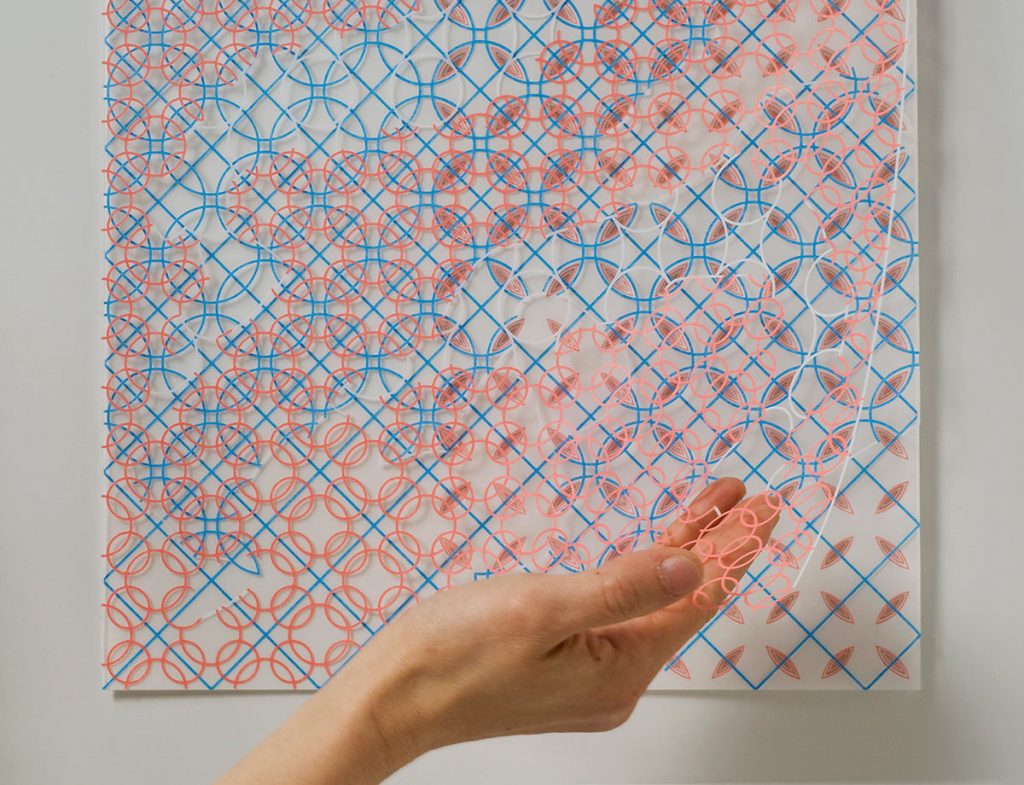About “The Constructed Print Series”
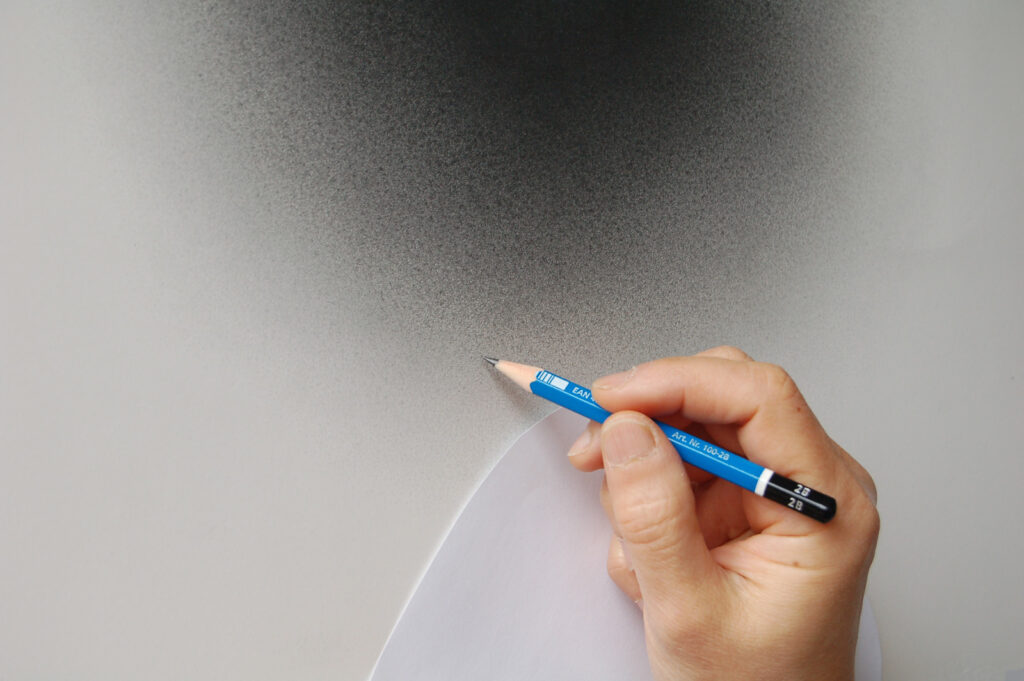
The new prints begin with a hand-made drawing in pencil that evolves slowly over a period of several months. Graphite is layered to create rich darks, and the outer perimeter is created with tiny, pointillistic marks. Gradually, an image develops that evokes an illusion of deep space, which is then transformed into a print.
The hand-drawn image is contrasted with an elaborate cut paper pattern that is mounted to the surface of the print. The patterns, which resemble a floating field of flowers, are drawn from Korean decorative arts. The iconography of Korean art conveys folk beliefs in plants and animals that offer protection from harm, and express desires for longevity, fertility, and harmony. Seen against an illusionistic image of great depth, the floral patterns create a drawing with light and shadow, half-real and half-imagined.
About “The Oracle Series”
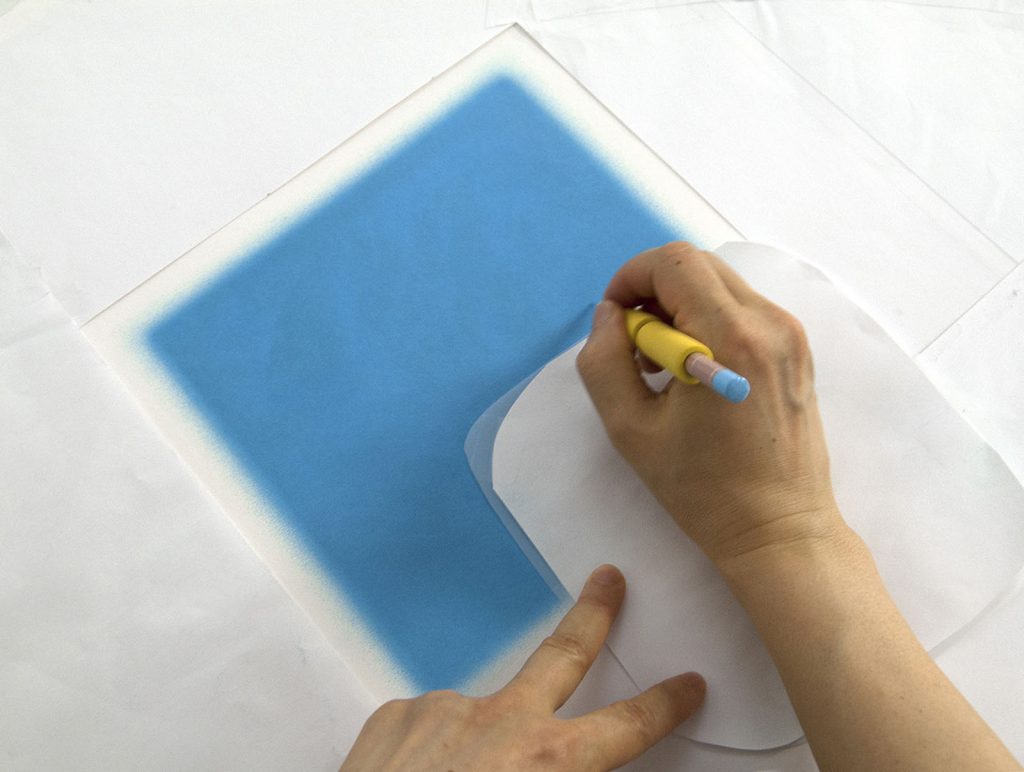
The imagery of “The Oracle Series” is created by three elements. The first is a field of pure pigment, which is hand drawn in archival colored pencil on a sheet of dense paper. The other elements are layers of cut paper that are held on pins over the color field. These layers have been cut into a lattice of elaborate floral and geometric patterns derived from Korean decorative arts.
When the cut paper drawings are perceived in front of the color field, their edges are brightly delineated. When seen in front of the uncolored paper, the cut paper can be almost invisible, with cast shadows more visible than the paper itself. Pins hold the layers of paper apart at precise distances. This creates a kaleidoscopic effect as the viewer moves around the piece.
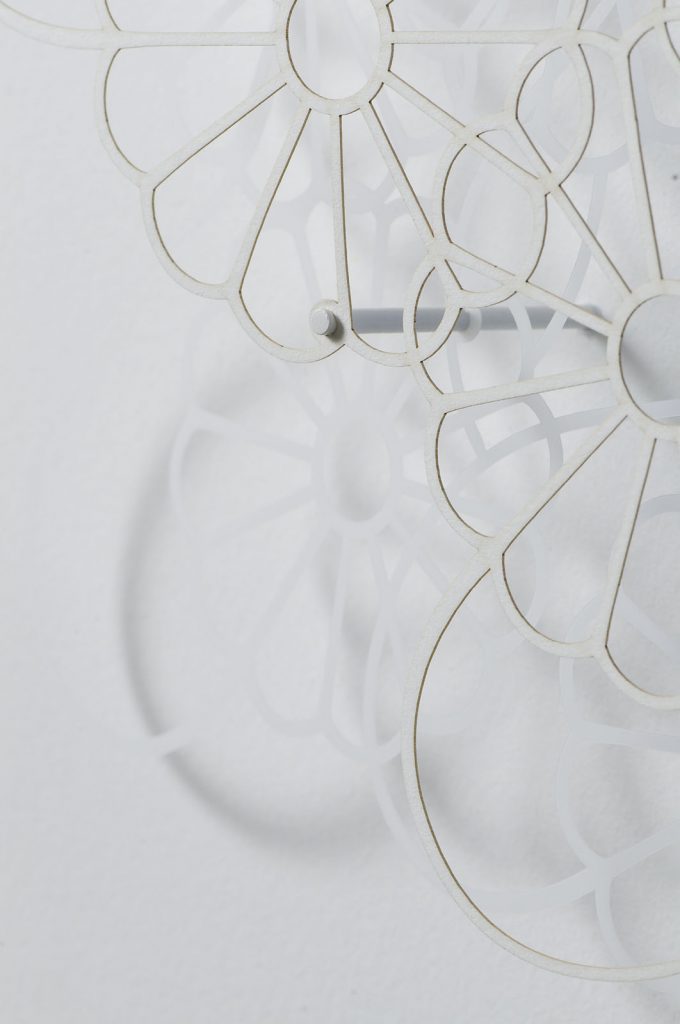
The dense paper of the color field also casts a shadow. In this way, the imagery of “The Oracle Series” is illusionistic yet allowed a corporeal physicality. The pieces seem to change throughout the day, suffused with light when daylight illuminates a space, and becoming more focused with artificial light in the evening.
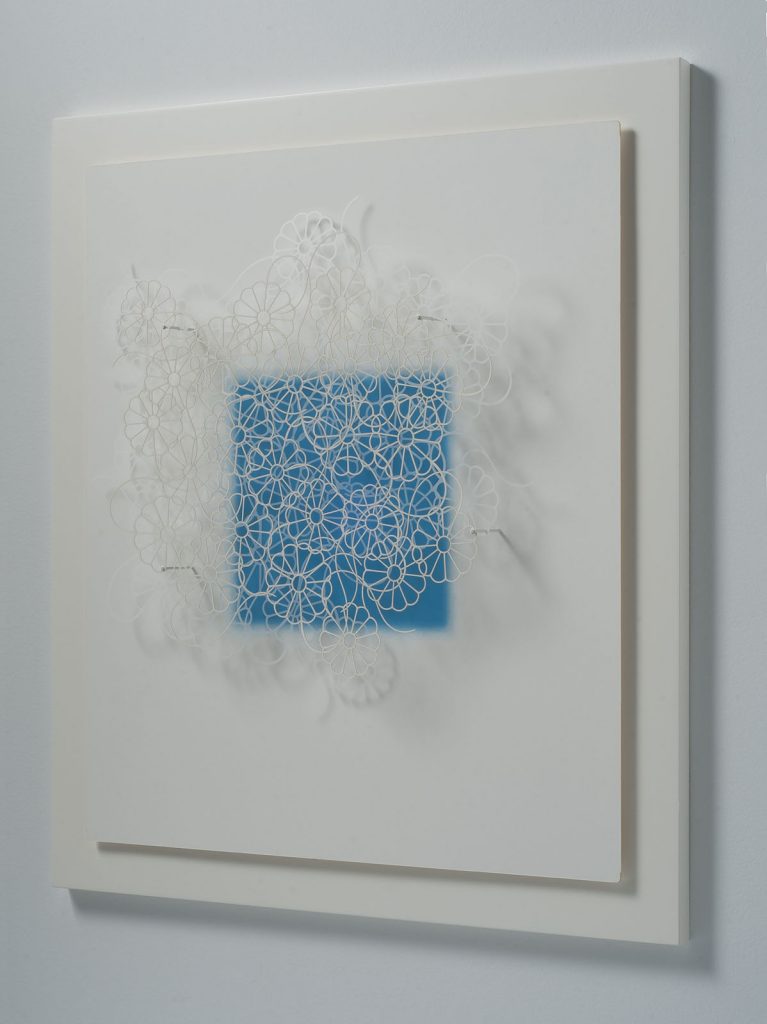
About “The Portal Series”
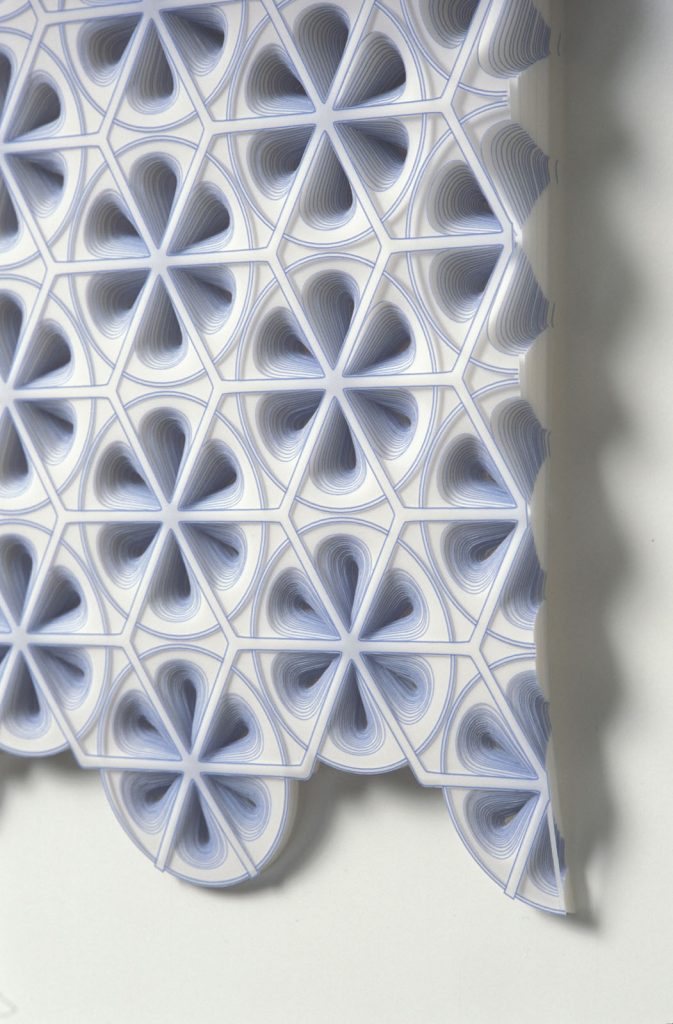
“The Portal Series” is made with translucent mylar that is printed, hand-cut, and layered in such quantity that sculptural forms are created. These works are made with up to thirty layers of paper, and can be up to three inches deep.
This series of constructed drawings is based on the decorative patterns and imagery from Korean wrapping cloths, called pojagi. Evocative of the decorative arts, the works of “The Portal Series” are designed to be alluring to the eye and highly crafted over the entire surface.
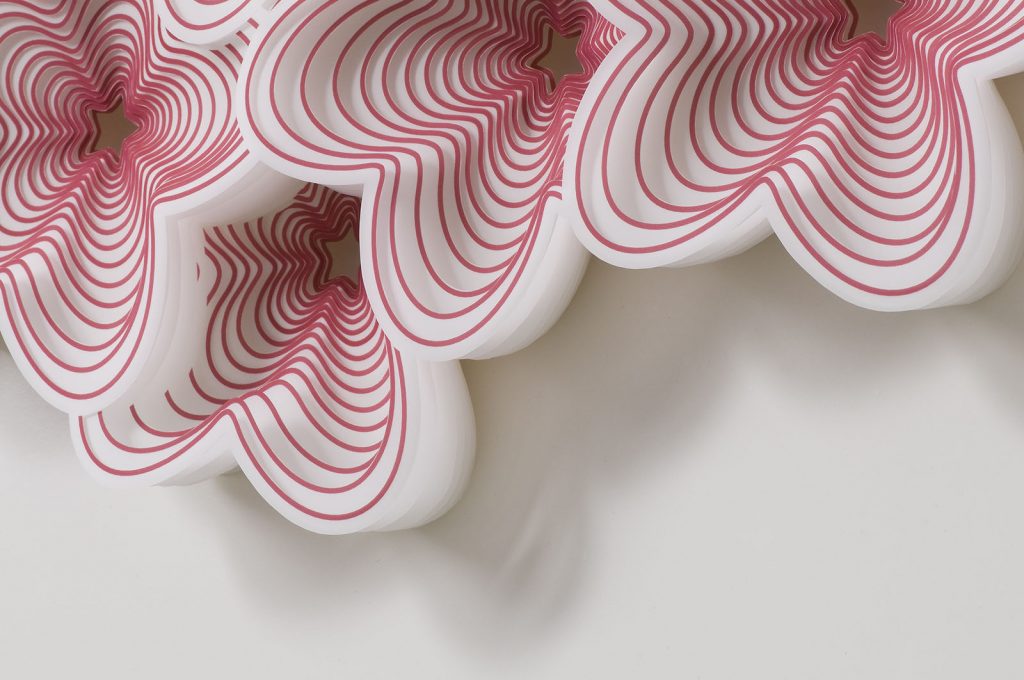
My first step is to model the negative spaces of the design in clay. Working with digital tools, I endeavor to create a design that will assume the desired negative space when cut out by hand and assembled in layers. The sculpted negative space is a void defined by the edges of cut paper, which diminish in size to just a few millimeters by the final layer. People often respond to the craft in these pieces, which suggests a level of control that seems inhuman. The process of hand cutting can indeed feel challenging and laborious, yet also meditative.
The pieces in “The Portal Series” are sculptural reliefs that use perspective drawing to suggest a deep space that exists only in the viewer’s perception. For this reason, it’s essential to perceive the edges of the works. The edges are where the immaterial image dissolves, and becomes physically immaterial. As the image dematerializes both pictorially and physically, it suggests a moment where the imagined and the real intersect.
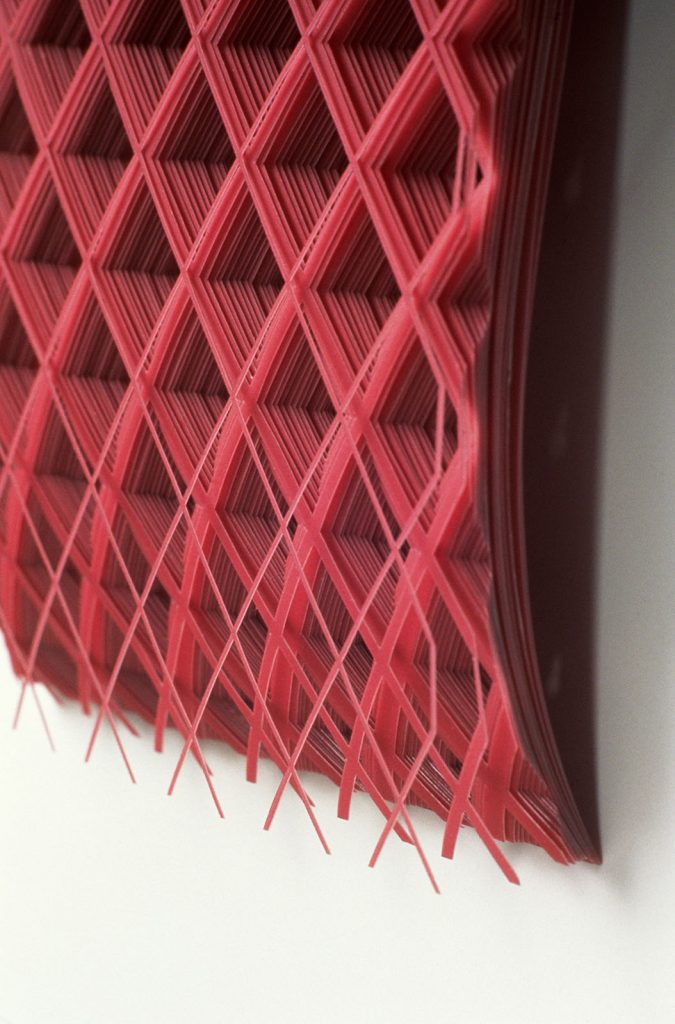
About “The Verso Variations”
“The Verso Variations” is based on a series of frescoes entitled “The Life of St. Francis” which adorns the upper cathedral in the San Rufino Cathedral of Assisi, Italy. The pieces are fabricated with numerous layers of translucent mylar that are cut in elaborate patterns and hand colored with archival colored pencil.
This series of constructed drawings references sacred ornamentation that has been eroded by time. I start with a model of the full pattern, then begin a process of cutting away at the component parts of the design. In some areas, so much of the pattern is cut away that a secondary pattern has been added for structural support.
The artworks of “The Verso Variations” are subtle reliefs that are about half an inch deep. Each layer of the piece contains one element of the pattern. When mounted on pins, the layers form patterns of line that appear to be drawn in space and cast a delicate shadow.
